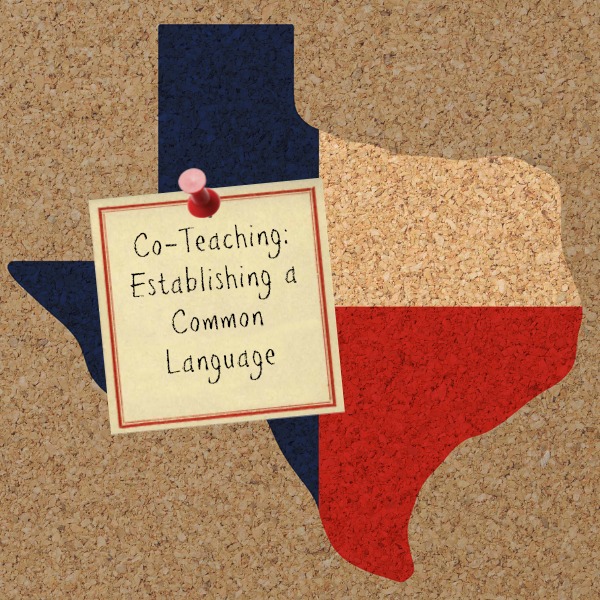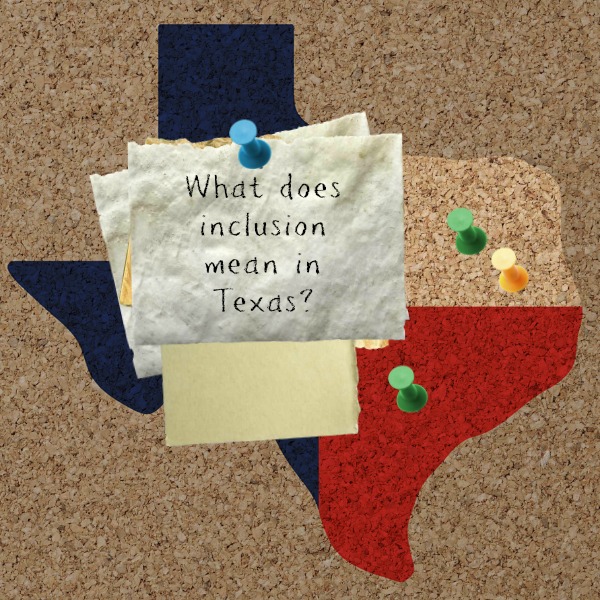Co-Teaching: Establishing Common Language
One of the most effective service delivery models is co-teaching, but what does that really mean? The first step to establishing effective co-teaching relationships is to begin with a common language. There seems to be some confusion that stems from a misuse of the word “inclusion”, so let’s start there. The word “inclusion” does not show up anywhere in IDEA PL-142, and the Department of Education has not defined the term. Individual states have been charged with interpreting the language about least restrictive environment that states “to the maximum extent appropriate, handicapped children, including children in public and private institutions or other facilities, are educated with children who are not handicapped”. The term inclusion has been used to describe everything from the philosophy about providing education in the least restrictive environment to the placement of students to the service delivery model that Special Education teachers use to teach Special Education students in the regular classroom. With all of these definitions floating around, it’s no wonder educators are confused.
What is inclusion?
According to the Texas Education Association, inclusion is “a belief system that values diversity and fosters a shared responsibility to help all students to reach their potential.” It is a philosophy, not a service delivery model.
What is inclusion support?
Inclusion support is a model for providing Special Education students a level of individual support in the general education classroom. Inclusion support is not co-teaching. Inclusion support seems to have been established early in the inclusive process before co-teaching was understood as an effective model for delivery Special Education services in the general classroom.
What is co-teaching?
Co-teaching is a learning environment in which two or more certified professionals share the responsibility of lesson planning, delivery of instruction, and progress monitoring for all students assigned to their classroom. As a team, these professionals share the same physical classroom space, collaboratively make instructional decisions, and share the responsibility of student accountability (Friend, 2008, p. 4)
Common Misconceptions about Co-teaching
- Co-teaching takes too much time. There are several different models of co-teaching. Some requirement a significant level of co-planning, but some can be implemented with minimal planning and are still effective.
- Co-teaching takes away from Special Education minutes. Effective co-teaching uses data-based teaching strategies to provide a high level of instruction to all students. Many co-teaching models effectively reduce the student/teacher ratio, therefore increasing the contact time between special education teacher and special education students.
- Special Education teachers can’t provide services regular education students. IDEA states that non-disabled students may receive services from Special Education teachers if those services are “incidental” as a result of the service that they are providing to disabled students.
What is Inclusion?
“Schools that describe themselves as having “full inclusion” are often referring to where students sit rather than to the beliefs of the educators providing services.” Somewhere along the line, in Texas, inclusion has also come to be understood as a service-delivery model rather a “belief system that values diversity and fosters a shared responsibility to help all students to reach their potential.” This lack of common understanding and common language has created a “mine” and “yours” ideology that has driven a stake between regular education teachers and special education teachers instead of uniting them in the common goal of providing all students with “free and appropriate education in the least restrictive environment” possible. Some of the confusion appears to be rooted in the the myths of inclusion and the lack of understanding of service-delivery models.
Inclusion is rooted in PL 94-142, also known as Individuals with Disabilities Education Act of 1975, or IDEA. In 2002, when No Child Left Behind was signed into law, school accountability for closing the achievement gap for students with disabilities came into the spotlight. Discussions about the meaning of Least Restrictive Environment (LRE), language used in the IDEA, were reignited. The IDEA 2004 LRE Mandate states the IDEA requires that “to the maximum extent appropriate, children with disabilities, including children in public or private institutions or other care facilities, are educated with children who are not disabled, and special classes, separate schooling, or other removal of children with disabilities from the regular educational environment occurs only when the nature or severity of the disability of a child is such that education in the regular classes with the use of supplementary aids and services cannot be achieved satisfactorily.” 20 U.S.C. ‘1412(a)(5)(A).”
Texas considers these factors when deciding what level of inclusion to provide for a student with disabilities:
- Has the district taken steps to accommodate the child with disabilities in regular education?
- Were these efforts sufficient or token?
- Will the child receive an educational benefit from regular education?
- What will be the child’s overall educational experience in the mainstreamed environment, balancing the benefits of regular and special education?
- What effect does the disabled child’s presence have on the regular classroom environment?
Inclusion is not co-teaching, and the two are not mutually exclusive. The are directly related, but they are not the same thing. If inclusion is the belief system that we embrace as a means for providing all students with the opportunity to achieve at the highest level possible, co-teaching is the model for delivery of service. And a highly effective model, at that. It is becoming apparent that this fundamental semantic breakdown is hindering the progress of effective service-delivery models in public education here in Texas.











